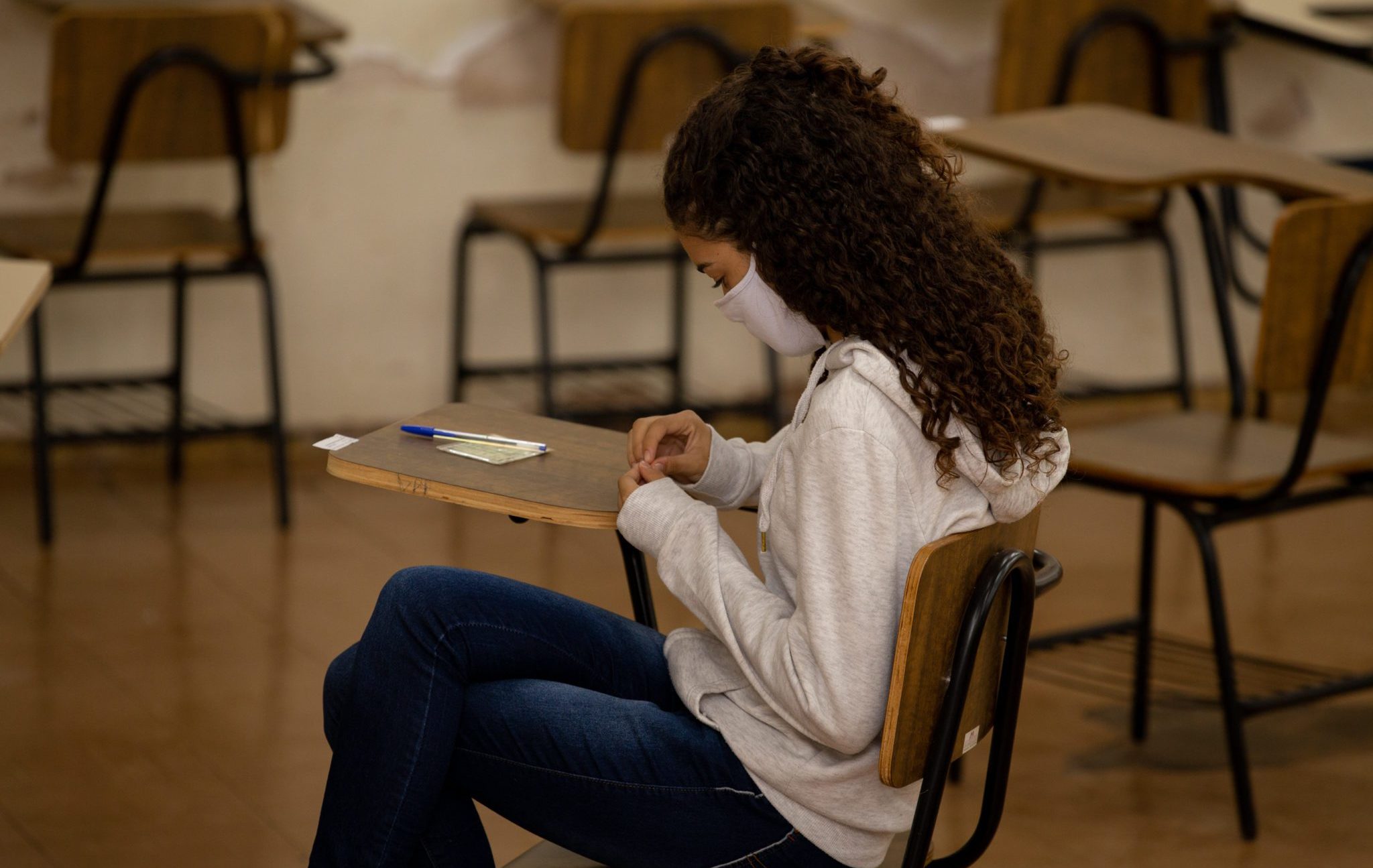There Cannot be Equity on Campus with Self-Censorship

Walking onto a college campus today, it is impossible to miss the omnipresent messaging of equity and inclusion. At my own institution, Sarah Lawrence College outside of New York City, our diversity, equity, and inclusion office states that the school is committed to “sustaining a diverse and inclusive learning, working, and living community” where people “with different views [must] be prepared to treat one another with mutual respect and honest curiosity so that they can engage and learn from one another.” Most institutions of higher education have made similar declarations, but there is a problem, or irony, in such statements: Far too many students today self-censor for these stated values of speech and diversity to be truly realized.
A recent report from the Foundation for Individual Rights in Education (FIRE) on the state of free speech in higher education captures over 37,000 voices of currently-enrolled students at 159 colleges, revealing that free speech is not alive and well on our nation’s college and university campuses. The data paint a vivid and frightening picture of life on campus: Some students are more free to speak than others, and there is remarkable bias when it comes to partisanship. Students on the right of the political spectrum keep silent at considerably higher rates than those on the left, while factors like race and socioeconomic status do not really impact one’s ability to speak.
The FIRE report shows that censorship on campuses is quite high. More than half, 53 percent of students, report that they self-censor occasionally or more often. More than a fifth, 21 percent, of students say they silence themselves fairly or very often for fear of how students, a professor, or their school’s administration might respond. This is a horrifying finding, as colleges and universities are the spaces where dialogue and discourse should flow freely and ideas should be debated and challenged.
There is incredible partisan variance regarding which students speak freely and which students keep quiet. A full three quarters of students, 75 percent, who identify as “strong Republicans” report they self-censor at least occasionally while 47 percent do so fairly or very often. More than two thirds of students, 69 percent, who identify as “weak Republicans” report keeping their thoughts to themselves occasionally or more and 35 percent remain silent at least fairly often. This means the overwhelming majority of students on the right regularly hold their tongues in the very spaces they should be using their voices. Independent students report only somewhat lower rates of self-censoring, with 59 percent at least occasionally self-censoring and 24 percent regularly keeping quiet.
What is particularly startling and should worry students, administrators, and the American citizenry is that the story looks far better for students on the left. Less than half, 47 percent, of “weak Democrat”-identifying students state that they occasionally or more frequently censor themselves with only 14 percent doing so fairly or very often. Just 39 percent of “strong Democrats” report occasionally censoring themselves, and only 10 percent report keeping quiet very or fairly often. This difference should not be overlooked: Three quarters of students who are strong Republicans regularly keep their mouths shut while less than half of strong Democratic students do the same.
Interestingly, with identity politics rampant on college campuses, racial differences are minimal in the data. Some 52 percent of white and 53 percent of Asian students report occasionally censoring themselves, compared to 53 percent of black and 49 percent of Latino or Hispanic students.
The roles of public and private school status and class in issues of free speech are frequently debated, with many believing that those with higher status and more wealth have more freedom in their speech. However, the data show that such claims are untrue, as 52 percent of those in public and 53 percent of those in private schools report censoring themselves occasionally or more often.
And on the issue of class, 58 percent of those who self-report being in the upper socioeconomic class say they self-censor at least occasionally, as do 50 percent of upper-middle class students. Of those who identify as middle class, 57 percent report self-censoring at the same rate, as well as 60 percent of working class and 57 percent of lower class students; again, fairly minor differences and nothing close to the partisan gaps.
Contrary to popular belief, traditional cleavages and demographic differences are not driving censorship: political preferences are. True equity and inclusion must include viewpoint diversity, must respect real and meaningful political differences and outlooks, and must embrace a multitude of ideas even if they make some members of the community uncomfortable. Colleges and universities have long served as robust marketplaces of ideas that embrace the competition of ideas that is foundational to a free and prosperous society. Students, families, administrators, donors, alumni and society at large must act now to correct this flaw now or our democracy and prosperity is at risk.
Samuel J. Abrams is professor of politics at Sarah Lawrence College and a nonresident senior fellow at the American Enterprise Institute.
Comments